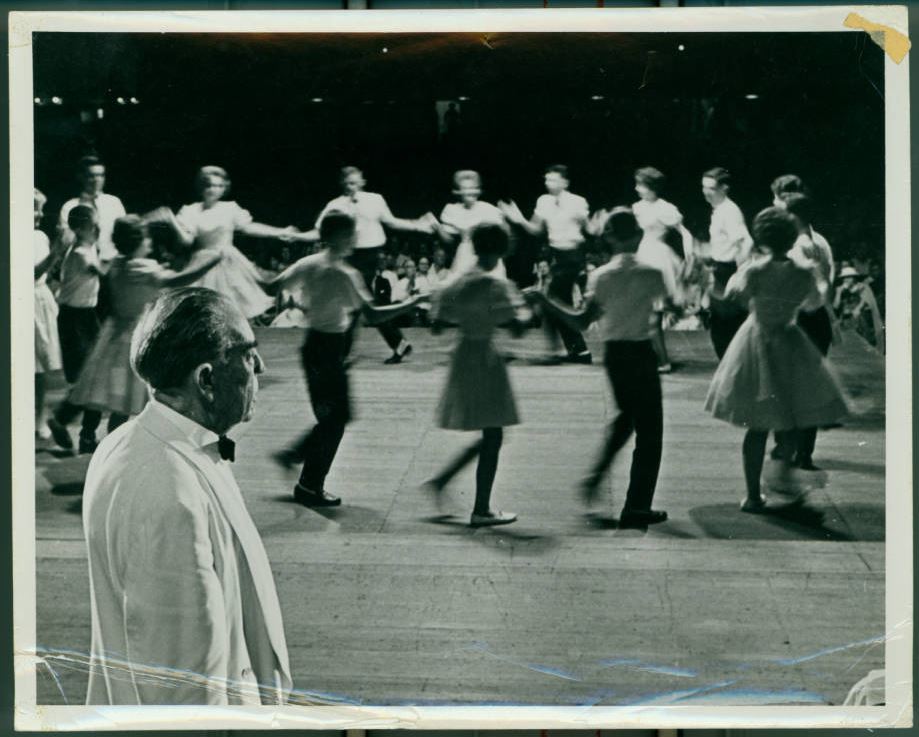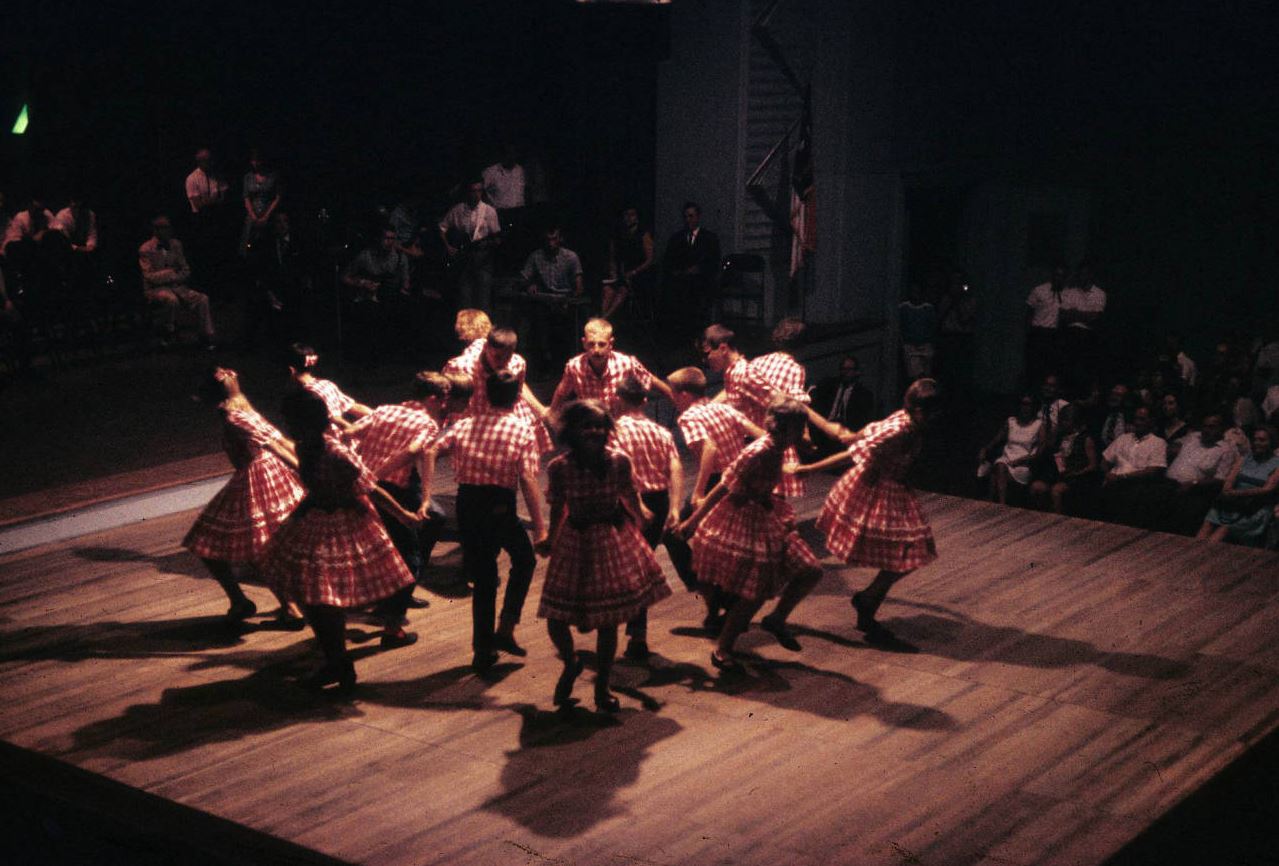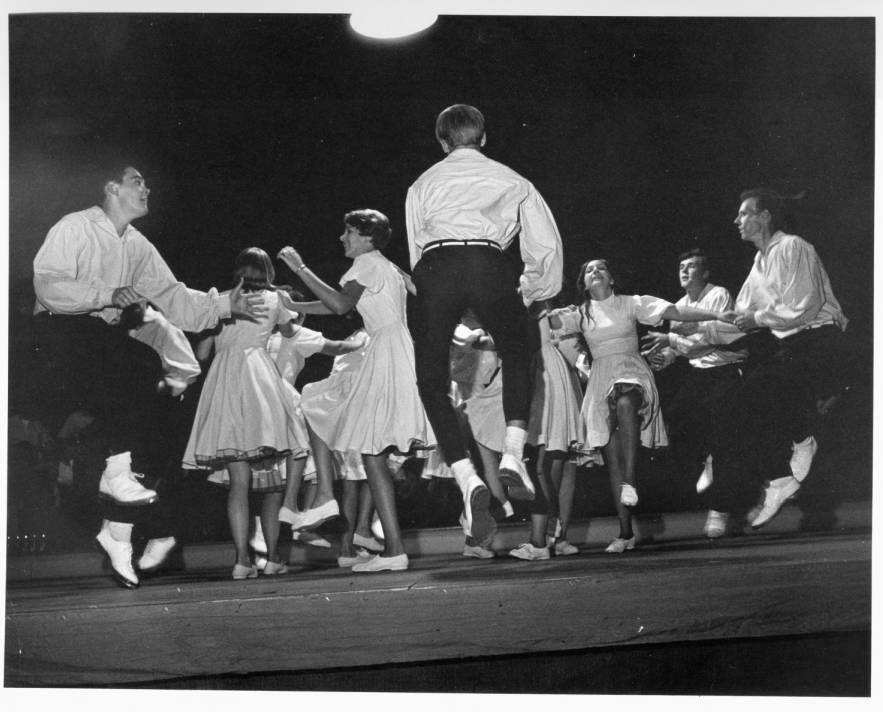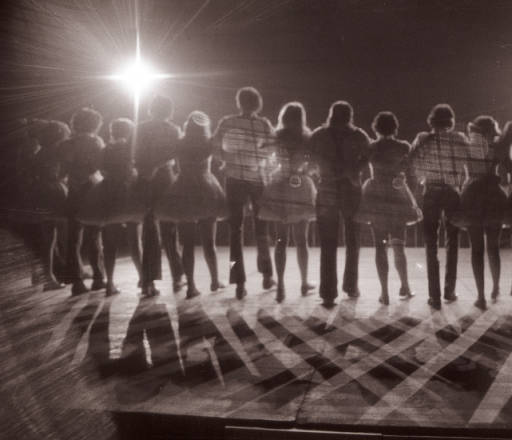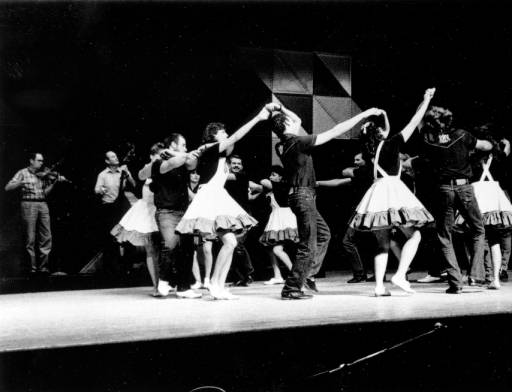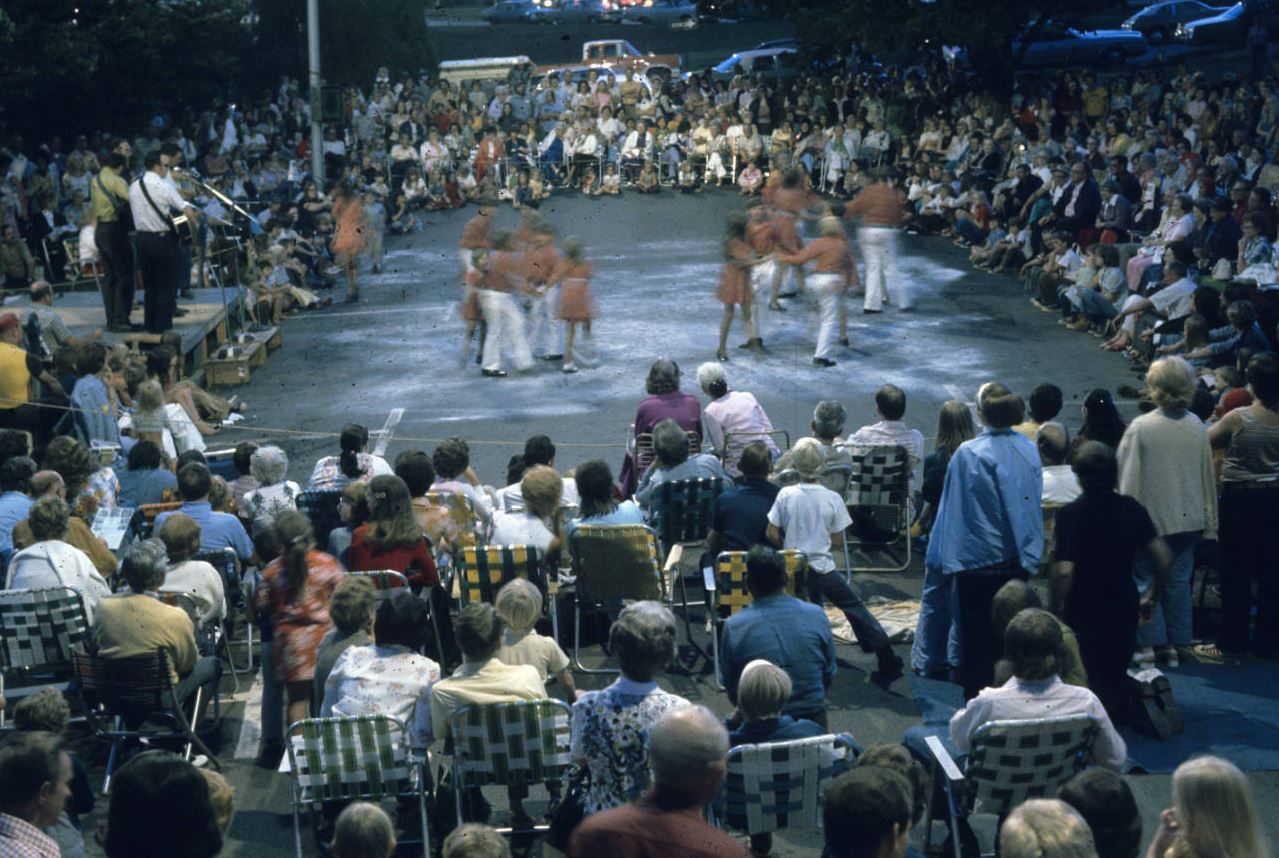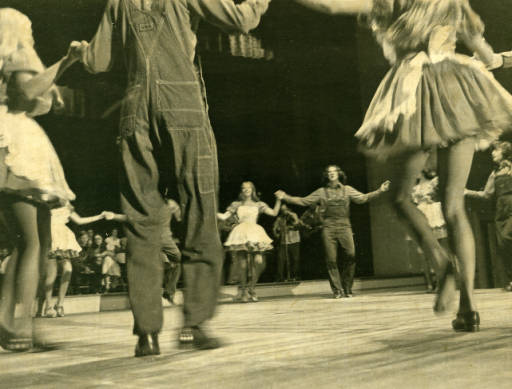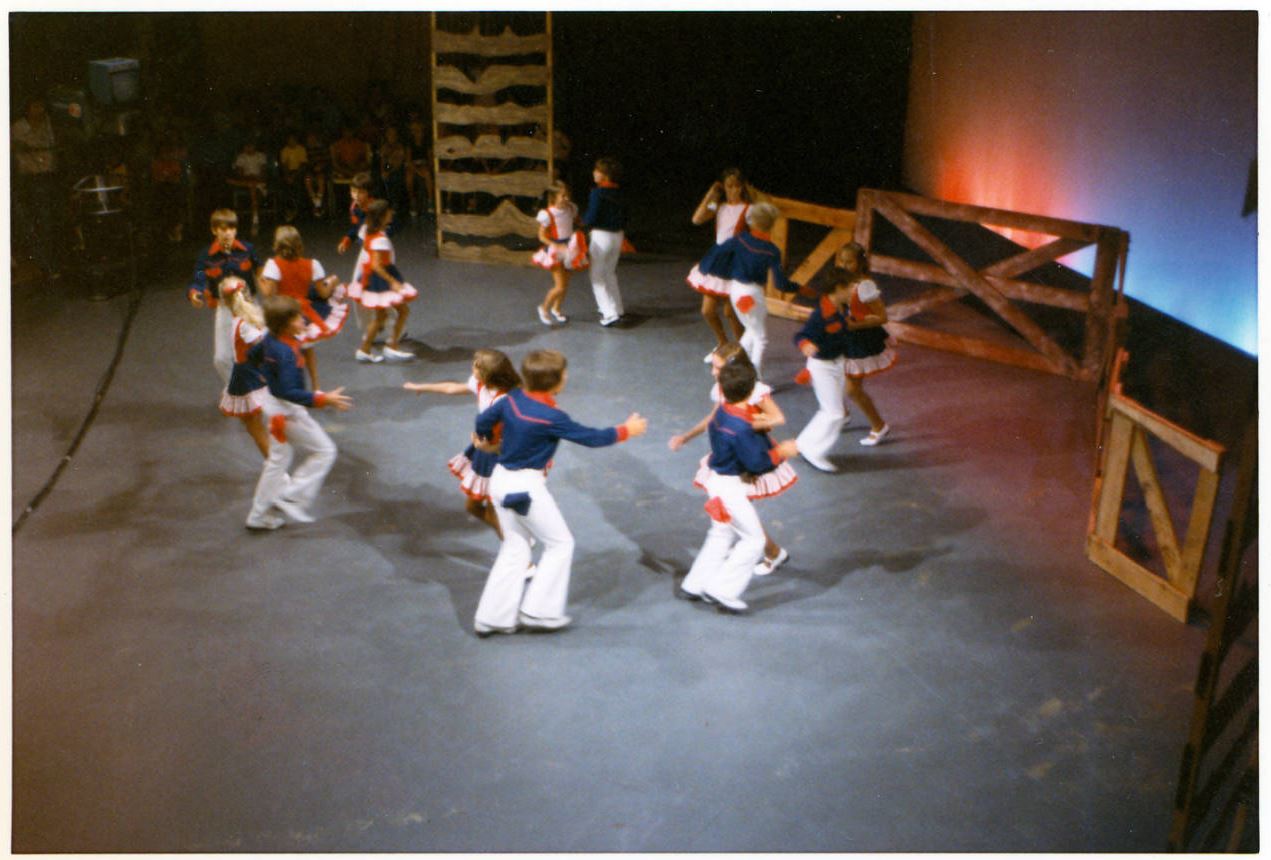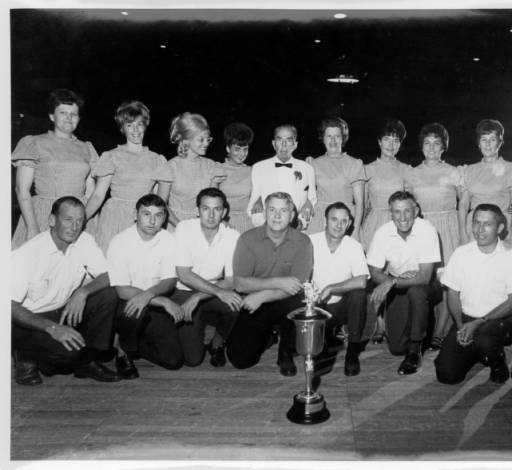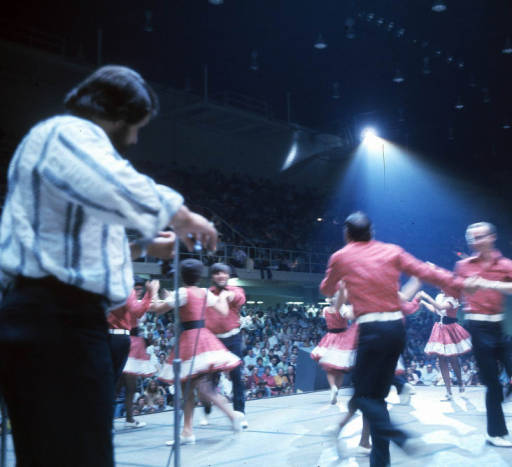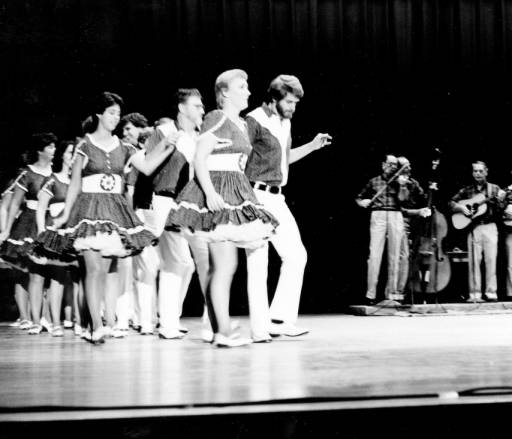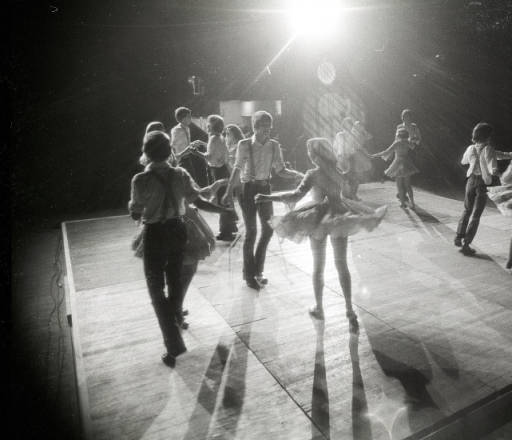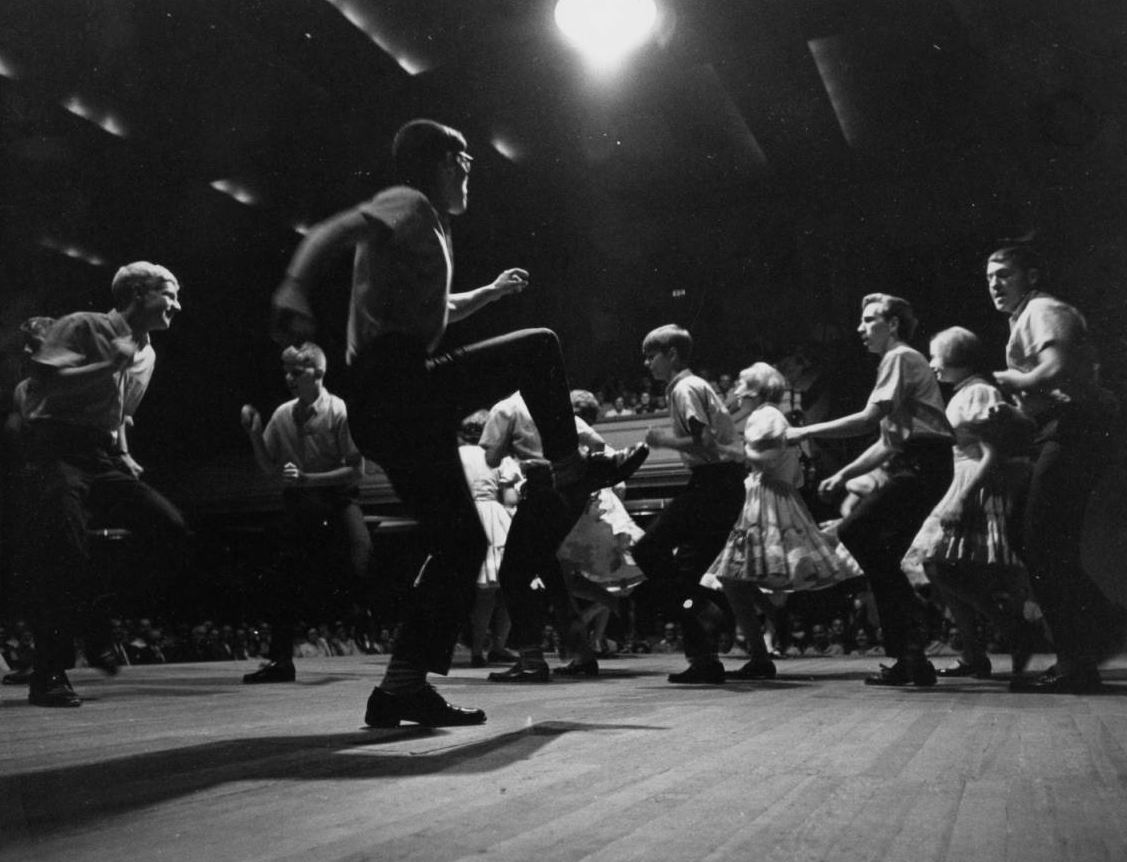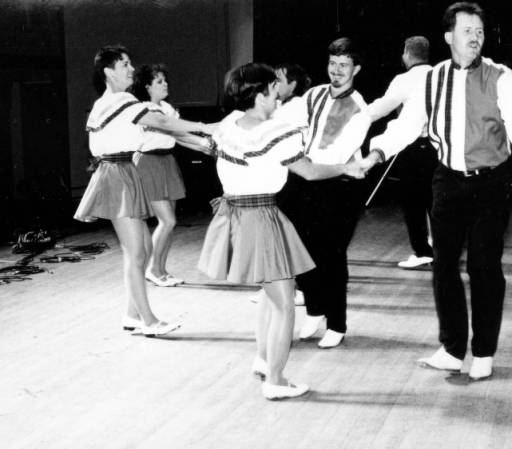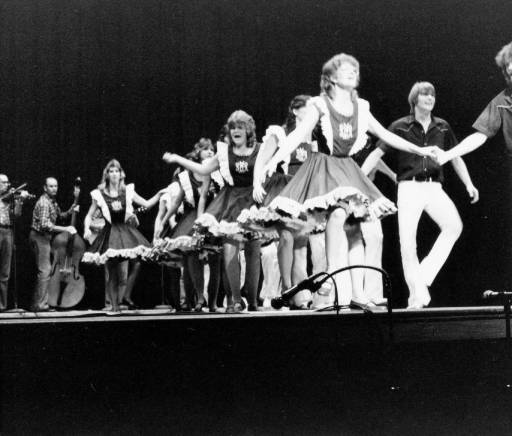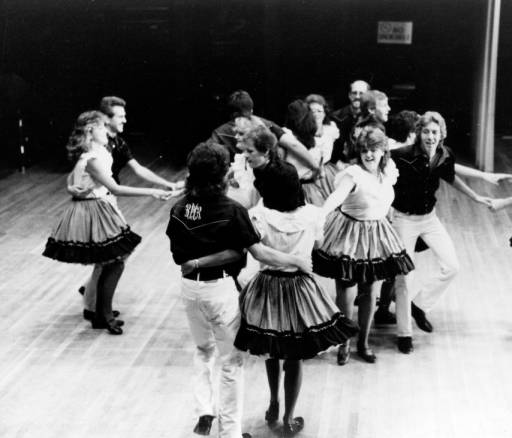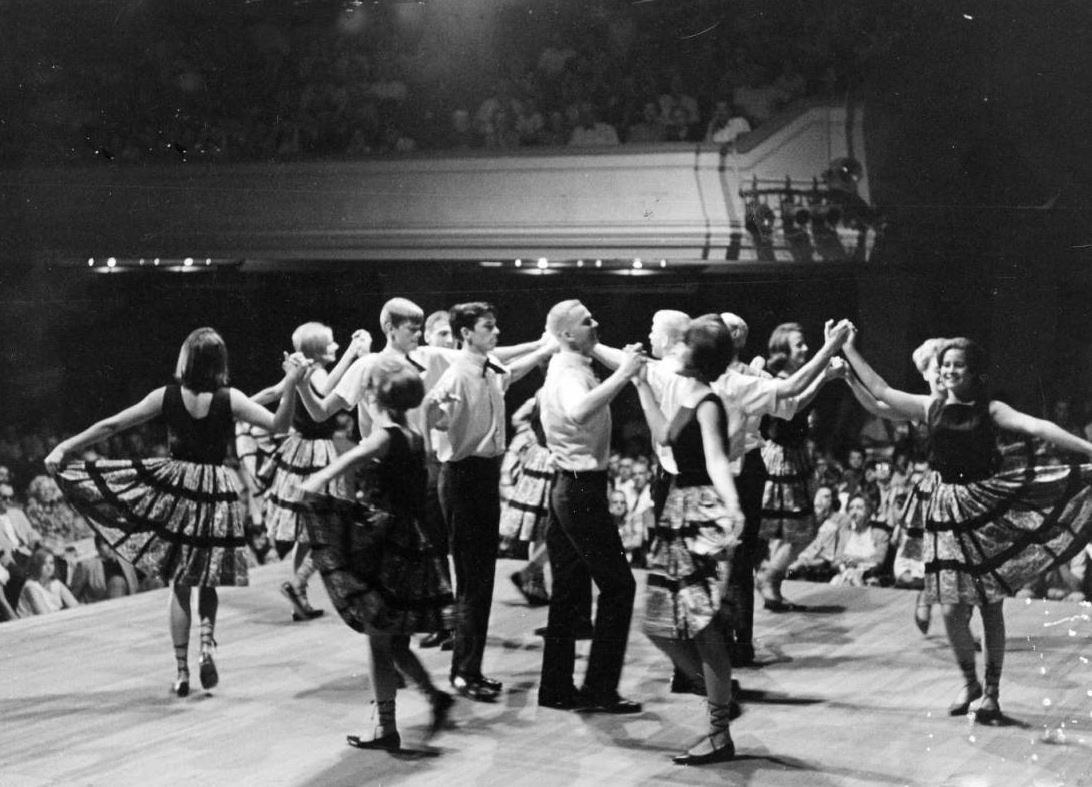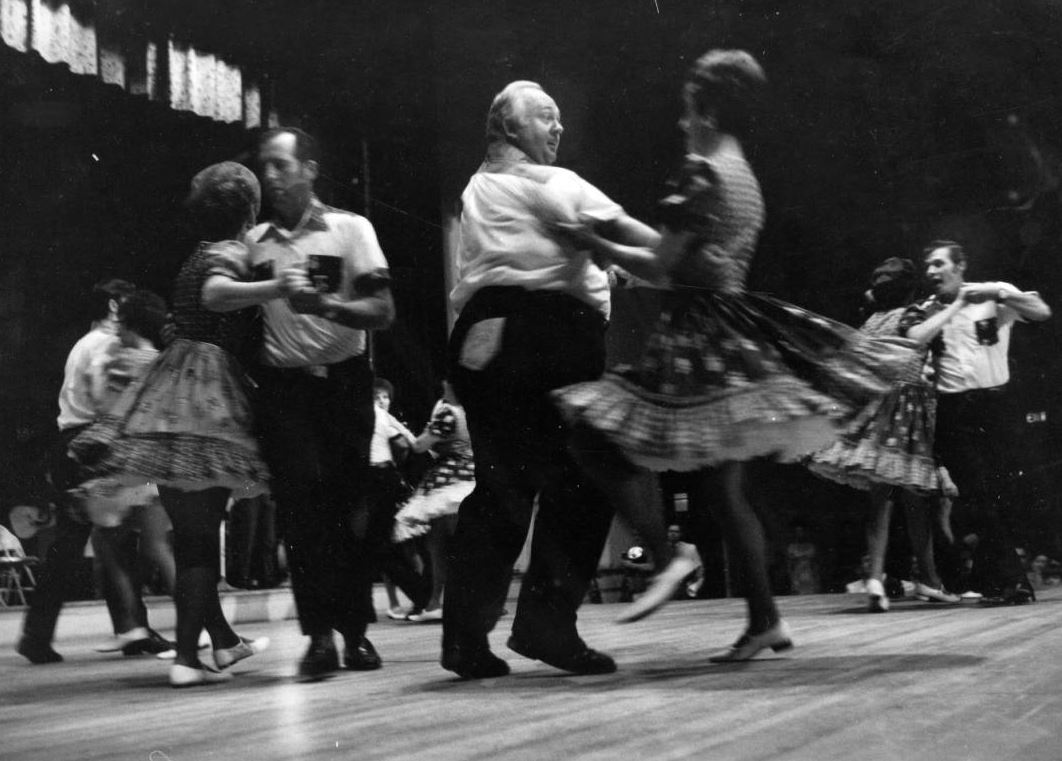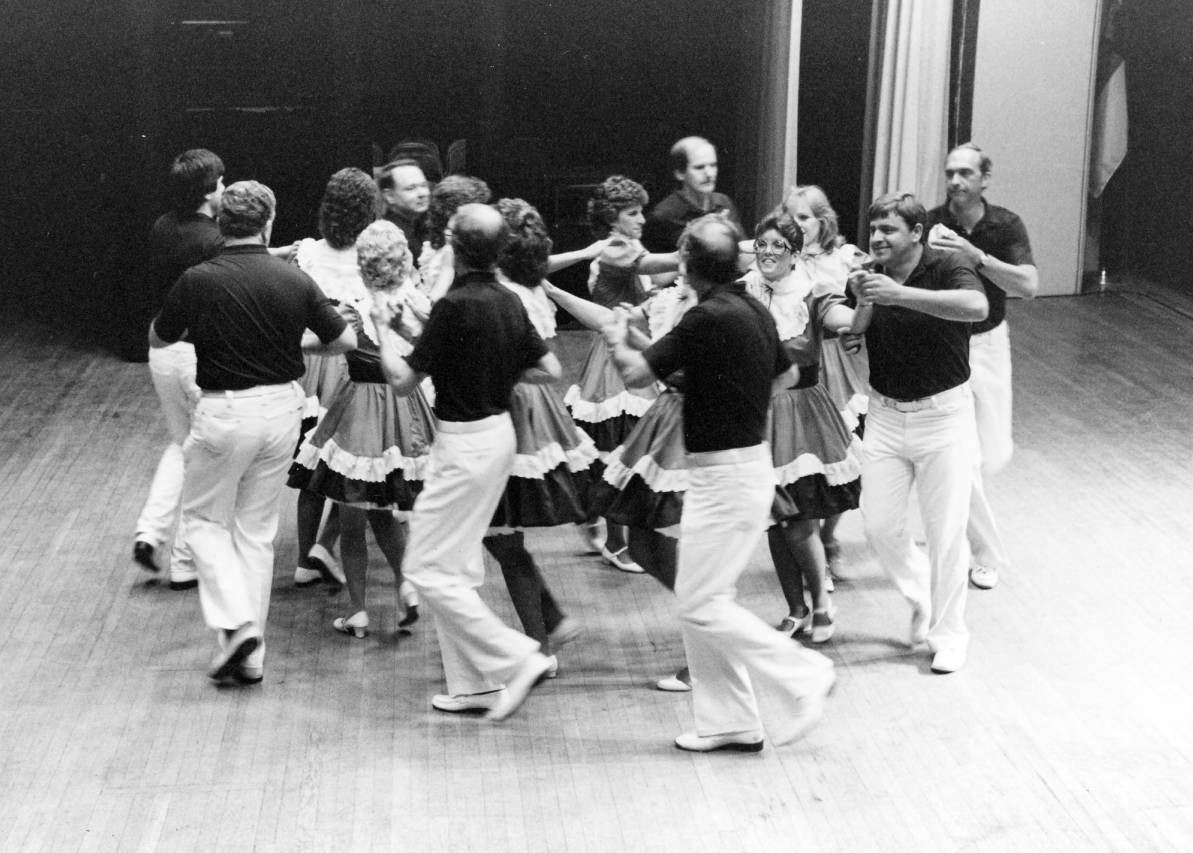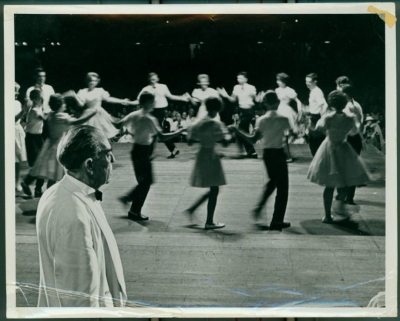
American Team Clogging has origins rooted in Asheville, North Carolina’s Mountain Dance and Folk Festival organized by Bascom Lamar Lunsford in 1928 (at that time, part of a Rhododendron Festival). At this festival, square dance teams were formed for each of several Western North Carolina counties for a competition, set to live old-time string music. Several years into the competition, teams began to introduce a form of clogged-through square dancing whereby all dancers on stage executed percussive steps–unchoreographed (free-style)–and wove their way through the interactive figures as instructed by their caller (one of the dancers in the set).
While the dancing was called square dancing, the Western North Carolina tradition was closely related to round dancing and involved 6 or 8 couples. This contrasts with the modern western square dancing that is popular throughout the world and has only 4 couples. In mountain square dancing, the dancers create smaller 2-couple squares to execute from a cannon of 4-person figures, and then rejoin the larger set for connecting figures designed for the whole group.
Before the Mountain Dance and Folk Festival, percussive solo dancing could be found as an expressive way to create rhythm usually with live music. A challenge to researchers, this type of solo dancing has been recognized under various names and each dancer, or sometimes a region, could have its own style or draw on its own influences. Some common names used to describe the solo form of these percussive dances include flatfooting, buck dancing, buck and wing, shuffling, step dancing, or jigging. The Mountain Dance and Folk Festival, and the creative influence of its competition format, transitioned the solo forms to a style performed by teams of mountain square dancers.
Since its origins, clogging expanded as its own category at Mountain Dance and Folk Festival, and today several national organizations are dedicated to competition clogging–with dozens of categories ranging from solos and teams, from our original styles to contemporary and modernized movement influenced by hip hop, drill teams, and every dance and music craze that help shape the whole of popular dance culture in the United States. The National Clogging and Hoedown Championship (N.C.H.C.) is the oldest sanctioned network of clogging competitions, and is now operated as part of our organization — the National Clogging Organization (C.L.O.G., Inc.).
Recreationally, clogging workshops trace their roots to Fontana Village in Western North Carolina where Bill Nichols taught clogging classes to guests at the resort–many of which were square dancers. The lessons at Fontana helped assign names to step sequences, paved the way for clogging line dances (without partners), and further wed clogging with the square dance community which benefited clogging with methods to publish choreography (cue sheets) using a unique shorthand, a network of vendors including costuming and shoe supplies, and recorded music resources including records with top clogging instructors cueing dances over the music track so dance teams and clubs across the country could learn and perform common material.
Today, the clogging workshop tradition is alive and well. C.L.O.G. organizes a national clogging workshop which is hosted by a different state or region each year. Many states or regions have a clogging council formed to connect teams and clubs in their areas and to plan such workshops. Hundreds of regional clogging workshops are organized across the nation and in numerous countries around the globe–not limited to Canada, Germany and Australia.
Credit: Andy Howard, M.A. in American Dance Studies from Florida State University.
Photos below Courtesy of Mountain Dance and Folk Festival Archives, Special Collections, University of North Carolina at Asheville. View index.

